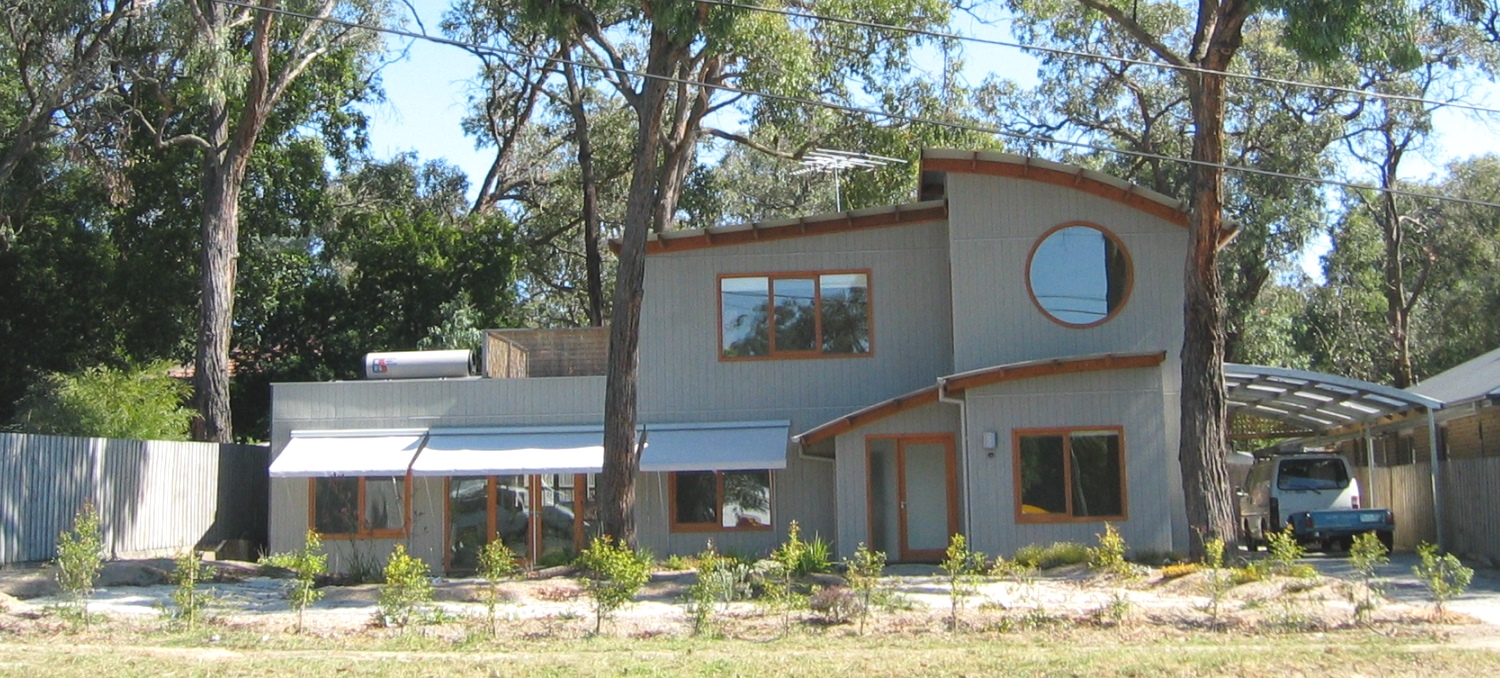Croydon House

Our very first build, back in 2003. Croydon House is in a leafy suburb on a sloping block, with north towards a very busy road. The house was set back the maximum 9 metres, and lilly-pilly trees were planted as boundary hedges to give both sound barrier and privacy. These now give total privacy.
An airlock entry keeps the unwanted cool wind out in winter and hot air in summer. Adjustable awnings give total solar control over the French door and windows of the dining and kitchen areas. Exposed-end rafters and out-riggers add architectural interest, and the double-glazed plantation hoop-pine windows are designed as casements to scoop in summer breezes. Plantation, reclaimed and recycled timbers are used throughout. (No forest timbers.)
To combat the thermal stack effect common to double stories, a two storey mudbrick internal spine wall was built to even out the temperature, and also to act as a heat sink for summer cool and winter heating. Mudbricks also have the added benefit of moderating indoor humidity, as well as acting as a sound barrier between living and sleeping areas. They are also extremely low in embodied energy.
Solar hot water and 15k litre water tank were included to run the wet areas, flush toilets and water gardens. This was one of the earlier homes to incoorporate rainwater harvesting in a suburban setting. It is good to see that today, this is very common, and it is now easy to find plumbers to do the work. This is at least in part, because clients like those at the Croydon house, paved the way for others to follow.
Download the factsheet for the environmental features of the house.






